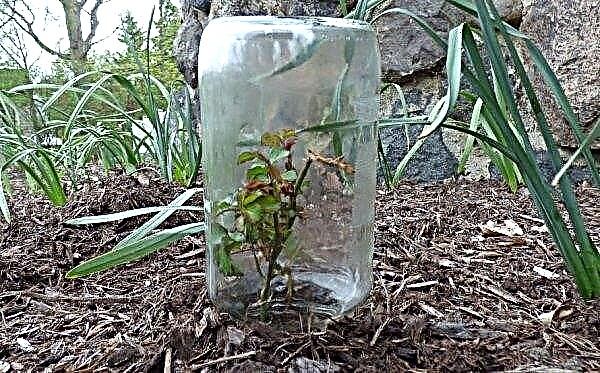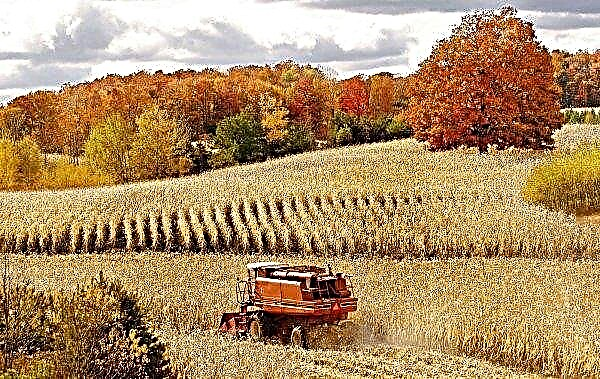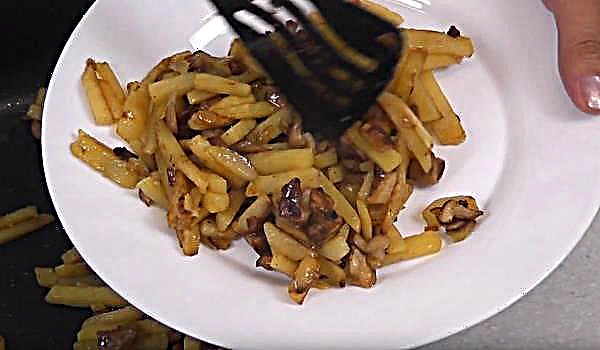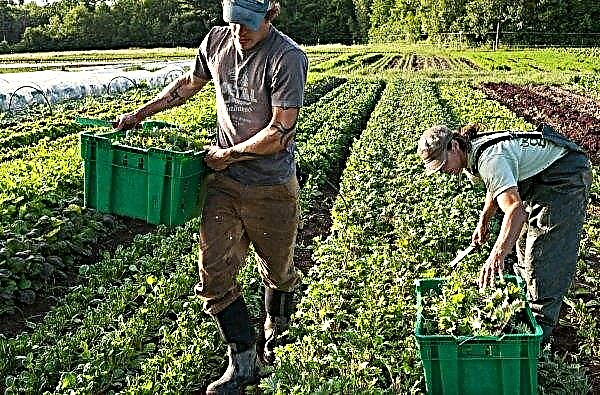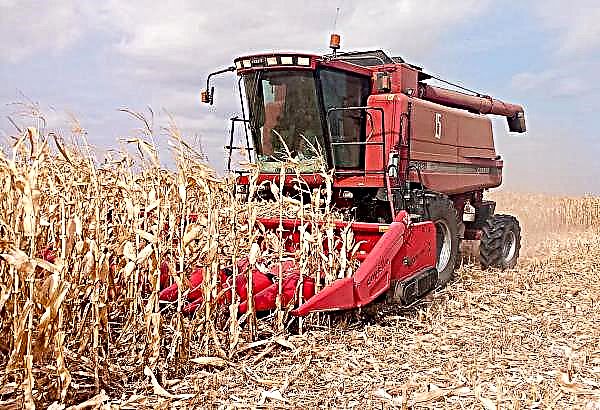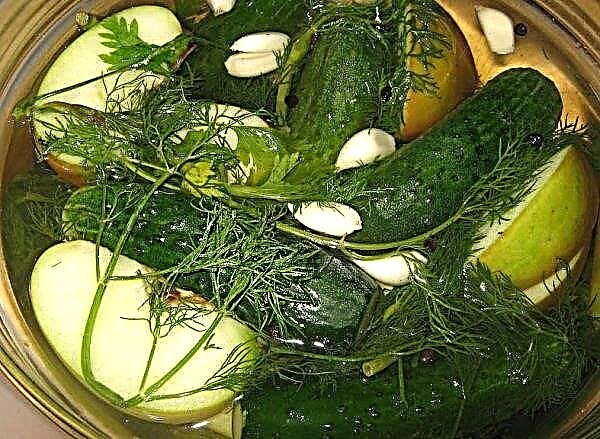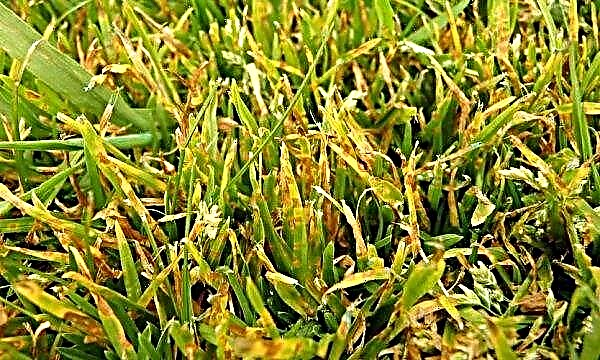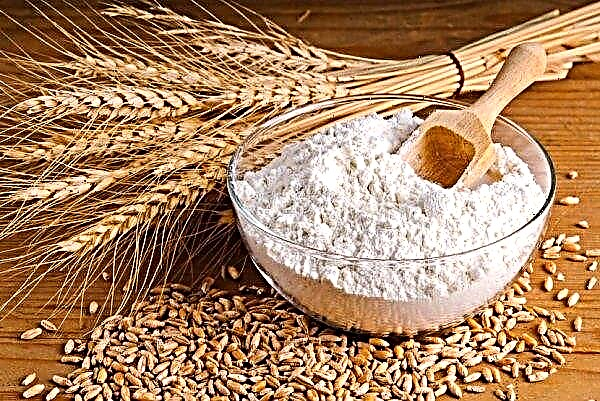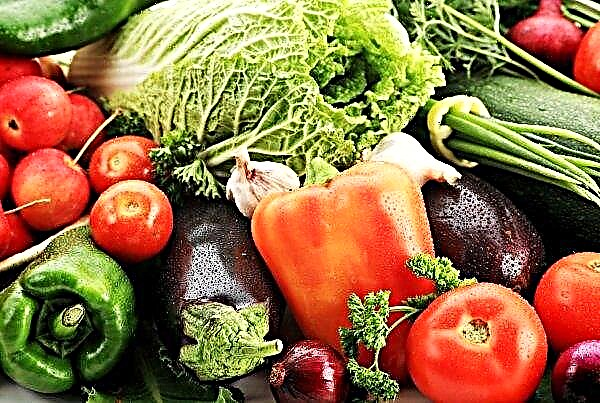Orange squash have an unusual appearance, which attract gardeners. In addition to an interesting form, the variety has many advantages. About the characteristics of these zucchini and the rules for growing them, read further in the article.
History of Orange Variety
Zucchini Orange is the fruit of the work of Russian originators. Seeds are produced and distributed by the Russky Ogorod-NK brand.
Did you know? The largest vegetable marrow was raised by British gardener John Handbury in 1998. The weight of the vegetable was 61.23 kg.
Description and characteristics of the variety
Orange squash is round. The peel is bright orange in color, which is why the variety got its name. The diameter of one fruit is on average 16 cm. The average mass of a vegetable is 300 g. The pulp is juicy and sweet. Bushes do not grow sprawling, small in size. The leaves are large, dark emerald color.
The variety refers to the ripening. The vegetation period averages 40 days. Productivity is below average.
 4-5 kg of fruits are removed from one bush during the growing season
4-5 kg of fruits are removed from one bush during the growing season
Advantages and disadvantages of the variety Orange
- Orange squash has several advantages:
- early ripening;
- compact fruit;
- universal application;
- the ability to eat raw.
- The variety has several disadvantages:
- yields below average;
- deterioration of taste and coarsening of seeds when the fruits are overripe.
Cultivation methods
Variety Orange can be grown by seedling and seedling method: each of them has its own characteristics.
Video: Zucchini Orange
Planting Seeds
Seeds in a garden or in a greenhouse are sown in mid-May, when there is no longer a threat of unexpected cooling. The optimum air temperature is + 25 ° C. Depending on the climate, deadlines may shift.
Important! The minimum temperature for growing seedlings is + 10 ° C. A temperature below is detrimental to the culture.
The soil is prepared six months before planting. For this, the site is dug up to a depth of 20 cm. When digging into the soil per 1 m², 5-10 kg of compost, 25 g of potassium sulfate and 40 g of superphosphate are added.
When it is time to land, follow these instructions:
- Dig holes with a depth of 7–8 cm. Maintain a distance of 0.8 m between rows and 0.7 m between bushes.
- Moisten the soil in the wells.
- Sow the seeds.
- Fill the wells with soil.
 After planting, moisten the soil as it dries. With regular watering and observing the temperature regime, the first shoots appear in a week
After planting, moisten the soil as it dries. With regular watering and observing the temperature regime, the first shoots appear in a week
Seedling method
Seeds for seedlings are sown in mid-May. For sowing, it is necessary to prepare peat pots - in them the seeds show the best germination.
Cultivation and preparation of seedlings are carried out as follows:Did you know? Zucchini was brought to Europe in the 16th century from Mexico. At first they were grown as an ornamental plant, and only in the XVIII century the vegetable was first eaten.
- Sow the seeds in peat pots. Place the containers in temperature conditions + 25 ° ... + 30 ° C. Before the first shoots appear, spray the crops from the sprayer daily. Under such conditions, the first seedlings will germinate in a week.
- In late May - early June, dive seedlings into larger pots filled with a fertile substrate. Suitable soil for growing zucchini can be purchased ready-made in garden stores.
- 30 days after sowing, in late June, transplant seedlings to a permanent place. When planting, follow the pattern of 0.7 m between the bushes and 0.8 m between the rows.

Care Features
When growing varieties, the main role is played by the care of the plantings.
In greenhouse conditions, try to maintain the temperature within +18 ... + 25 ° С. The bushes also need to provide bright lighting. The optimal daylight hours for the variety are 7 hours a day.
Watering is carried out as necessary. The soil is moistened when the top layer dries 1-2 cm. The soil is irrigated under a bush so that water does not fall on the leaves. After each watering, the soil in the aisles needs to be loosened. In parallel with loosening, weeds can be removed.
So that moisture is better preserved in the soil, planting is better to mulch. Organic materials, such as straw or sawdust, should be used as mulch.

Fertilizers are recommended to be applied three times during the growing season:
- before budding - a solution of 1 tbsp. l nitrophoski and 500 ml of mullein per 10 l of water;
- during flowering - a solution of 30 g of ash per 10 l of water;
- with mass ripening of fruits - a solution of 30 g of nitrophosphate per 10 l of water.
Important! When preparing solutions do not use more than what is indicated in the recommendations. Excessive feeding negatively affects the development of bushes and fruits.
In case of strong growth of the plant, the bush should be pinched. To do this, remove 2-3 leaves growing near the ovary, - thus the fruits will receive more nutrition.
Growing difficulties
When growing varieties, difficulties may arise in the form of diseases and pests.
Among the most dangerous diseases:
If a disease is detected, the affected parts must be removed. For treatment, the bushes are treated with Bordeaux liquid.
The variety is also susceptible to pest attacks, including:
To get rid of parasites, insecticide treatment is recommended. The most acceptable option is spraying with Confidor solution (1 ml per 10 l of water).
Harvest rules and fruit application
Harvest must be removed as it ripens without leaving fruit on the bush for long. If you do not pluck the zucchini immediately, the taste is lost, the flesh becomes dry and tasteless, and the seeds are coarsened.
 The application of the variety is universal: squash Orange can be stewed, cooked, fried and canned. The manufacturer indicates that the fruit is suitable for raw consumption.
The application of the variety is universal: squash Orange can be stewed, cooked, fried and canned. The manufacturer indicates that the fruit is suitable for raw consumption.
Orange squash is unusually tasty, which is why they won the attention of Russian gardeners. However, to grow a plant, you need to make a lot of effort. Only with proper planting and proper care on the bushes will a large number of quality fruits ripen.


